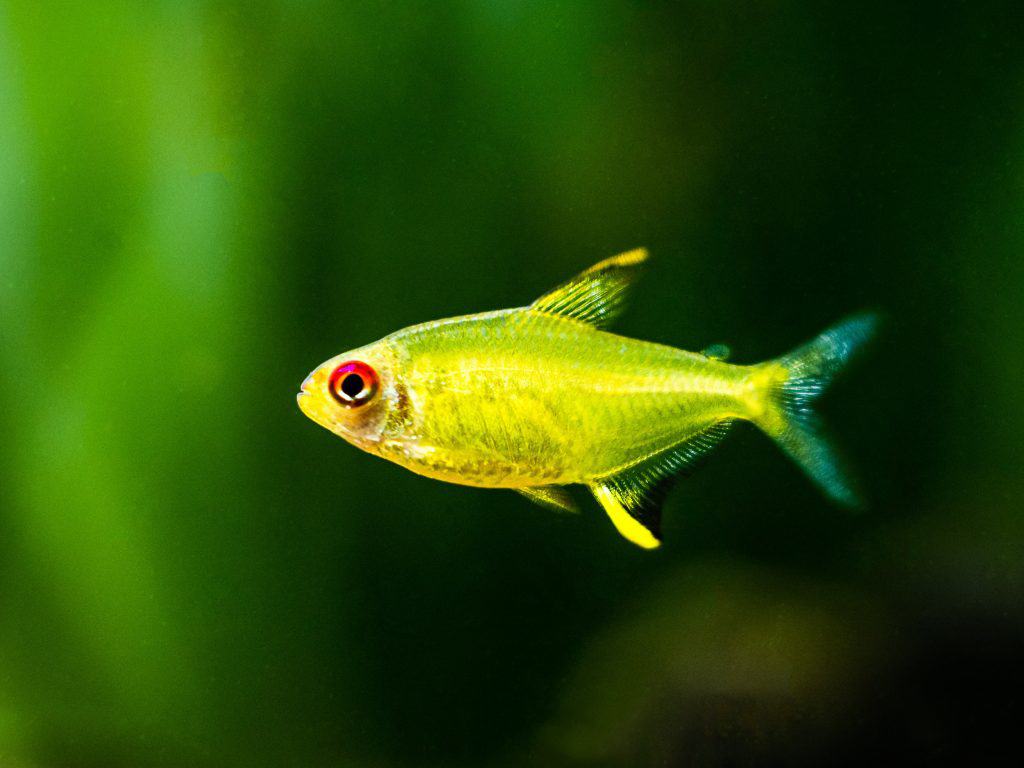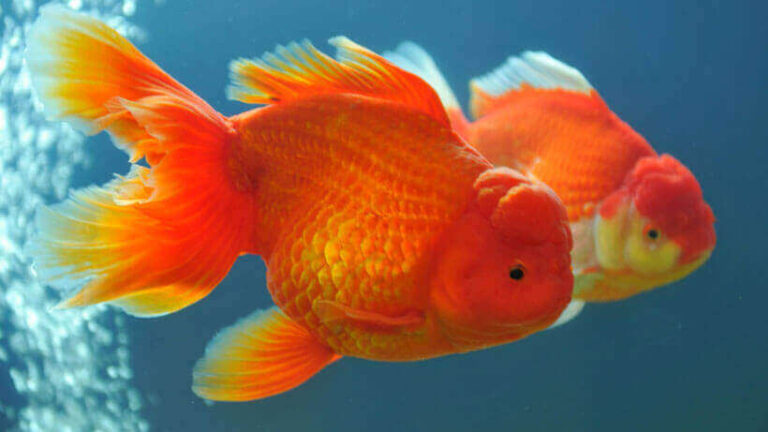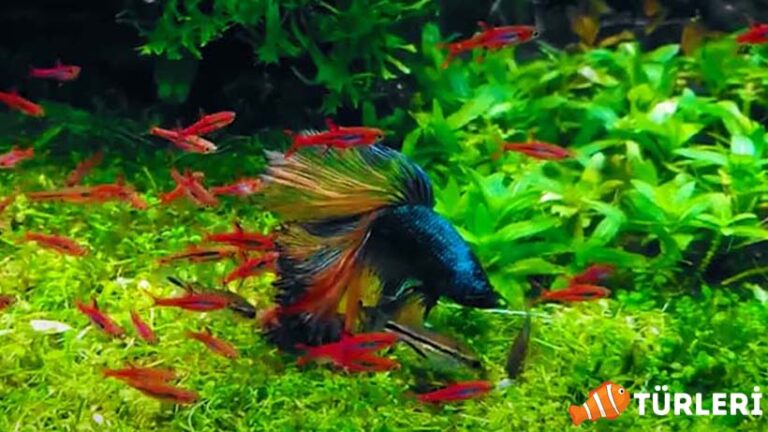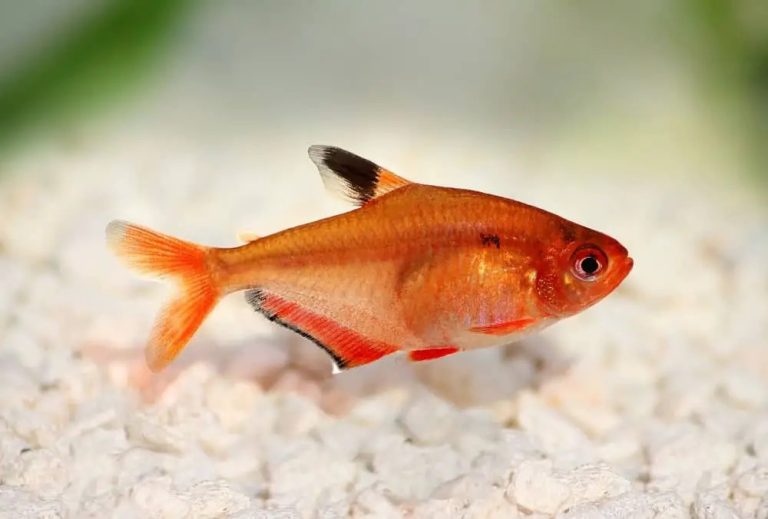Lemon Tetra
The Lemon Tetra (Hyphessobrycon pulchripinnis) is a popular freshwater fish native to South America, specifically the Amazon River Basin. They are admired for their vibrant, lemon-colored bodies and are a popular choice for community aquariums. Below is a guide to taking care of Lemon Tetras.
Lemon Tetra Fish Species Summary:
| Scientific Name: | Hyphessobrycon pulchripinnis |
| Origin: | Amazon River Basin, South America |
| Diet: | Omnivore (eats both plant and animal-based foods) |
| Behavior: | Active, playful, and social |
| Behavior Towards Their Own Species: | Prefers to be in schools, can be shy when first introduced to a new environment. |
| Swimming Zone: | Middle to upper layers of the aquarium |
| Water Temperature: | 23-27°C (73-81°F) |
| Water Hardness: | 4-12 dGH |
| pH Level: | 6.0-7.5 |
| Minimum Aquarium Volume: | 75 Liters (20 gallons) for a school of Lemon Tetras |
| Adult Size: | Up to 5 cm (2 inches) |
| Reproduction: | Egg-scatterers, requires a separate breeding tank with specific water parameters and plenty of fine-leaved plants |
| Lifespan: | 5-8 years (with proper care) |
| Care: | Moderate, requires a balanced diet, regular water changes, and monitoring of water parameters. |
Diet
Lemon Tetras are omnivorous, which means they consume a variety of plant and animal-based foods. In their natural habitat, their diet consists of small insects, worms, and plant debris. It is essential to replicate this varied diet in the aquarium setting to ensure their optimal health and vibrant coloration.
In the aquarium, a balanced diet should include high-quality flake food and small pellets specifically designed for tetras or other small omnivorous fish. These foods usually contain a mix of plant and animal-derived ingredients to provide the necessary nutrients. However, it is also crucial to supplement their diet with live or frozen foods, such as brine shrimp, daphnia, or bloodworms, as these are more similar to their natural diet and provide essential proteins and fats. Feeding live or frozen foods not only helps in maintaining their vibrant colors but also encourages natural hunting behaviors.
It is also beneficial to include some plant-based foods, such as spirulina flakes or blanched vegetables (e.g., spinach, zucchini) in their diet. This will ensure that they are getting all the necessary vitamins and minerals.
It is recommended to feed Lemon Tetras small amounts of food 2-3 times a day. Be careful not to overfeed, as this can lead to water pollution and health problems for the fish. Any uneaten food should be removed from the aquarium after a few minutes to prevent it from decomposing and affecting the water quality.
In summary, a varied diet consisting of high-quality flake food, small pellets, live or frozen foods, and some plant-based foods will help keep your Lemon Tetras healthy and colorful. Regularly monitoring the feeding amounts and removing uneaten food will also contribute to maintaining a clean and healthy aquarium environment.

Tank Mates
Lemon Tetras are peaceful and sociable fish that thrive in a community setting. They are schooling fish, which means they prefer to swim and interact in groups. Keeping them in groups of at least 6-8 individuals will help them feel secure and reduce stress. Larger groups are even better, as they will exhibit more natural behaviors and their vibrant colors will be more prominent.
Compatibility: Lemon Tetras are compatible with other peaceful and similarly sized community fish. Suitable tank mates include guppies, mollies, platies, and other types of tetras such as neon tetras, cardinal tetras, and glowlight tetras. They can also coexist harmoniously with small and non-aggressive bottom-dwelling fish such as corydoras catfish and smaller loaches.
Aquarium inhabitants to avoid: It is important to avoid keeping Lemon Tetras with aggressive or large predatory fish. Fish such as cichlids, arowanas, and large catfish may see Lemon Tetras as prey and cause harm or stress to them. Also, avoid keeping them with fin-nipping species such as some barbs and larger tetras, as this can lead to stress and injury.
In summary, when selecting tank mates for Lemon Tetras, it is important to choose other peaceful, similarly sized community fish. Avoid aggressive or predatory species, and ensure there is plenty of space for all inhabitants to swim and hide. This will help create a harmonious and stress-free environment for all the aquarium inhabitants.
Size
Lemon Tetras are relatively small fish, typically reaching a maximum size of about 2 inches (5 cm) in length. They have a slender, elongated body with transparent fins that makes them appear even smaller. Despite their small size, they are active swimmers and require ample swimming space. When planning the aquarium size, it is important to consider not only the size of the individual fish but also the size of the group. A school of Lemon Tetras will need enough space to swim comfortably without overcrowding. A 20-gallon tank is usually the minimum recommended size for a group of 6-8 Lemon Tetras. Larger tanks are always better, especially if you plan to keep other species of fish in the same aquarium.
Behavior
Lemon Tetras are known for their active, playful, and social behavior. They are schooling fish, which means they prefer to be in groups and can often be seen swimming together in the middle to upper layers of the aquarium. This schooling behavior is not only a natural instinct but also provides them with a sense of security.
- Initial Shyness: They may exhibit shyness when first introduced to a new tank, often seeking refuge among plants or other hiding spots. This behavior is normal and is a part of their acclimation process to the new environment. Once they become accustomed to their new surroundings and feel secure, they will become more active and confident, swimming openly and interacting with other fish.
- Social Interaction: Lemon Tetras are social creatures and enjoy interacting with other fish of their kind. They will often be seen chasing each other playfully, which is a normal part of their social interaction and should not be a cause for concern. However, it is important to monitor their behavior to ensure it does not escalate into aggression.
In summary, Lemon Tetras are active, playful, and social fish that prefer to be in schools. They may exhibit shyness when first introduced to a new environment, but with time, they will acclimate and become more active and confident. It is important to provide them with plenty of hiding spots and monitor their behavior to ensure healthy social interactions.

Tank Requirements
Tank Size
A minimum of 20 gallons (75 liters) is recommended for a school of Lemon Tetras. This size provides adequate swimming space and helps maintain stable water parameters. However, bigger is always better as it provides more swimming space, allows for a more significant number of fish, and helps maintain stable water parameters even better.
Water Parameters
Lemon Tetras prefer slightly acidic to neutral water. The recommended pH range is 6.0-7.5. The water hardness should be between 4-12 dGH, and the temperature should be maintained at 73-81°F (23-27°C). These parameters are essential to keep the fish healthy and vibrant. It is crucial to test the water regularly to ensure these parameters are maintained.
Decoration:
Providing plenty of plants and hiding spots is essential to mimic the Lemon Tetra’s natural habitat and make them feel more comfortable. However, it is also important to leave some open swimming space for them to move around freely. Decorations such as driftwood, rocks, and dense vegetation will help create a more natural environment. Floating plants can also be added as they provide shade and can help reduce stress.
In summary, a minimum 20-gallon tank with slightly acidic to neutral water, plenty of plants and hiding spots, and some open swimming space are essential for keeping Lemon Tetras happy and healthy. Regularly monitoring the water parameters and providing a natural environment will help ensure their well-being.
Maintenance
- Regular Water Changes: It is crucial to perform regular water changes of about 25-30% every week to maintain good water quality. This helps in removing waste products, excess food, and other debris from the water, which can lead to the buildup of harmful substances like ammonia, nitrites, and nitrates.
- Testing Water Parameters: Regularly testing the water for ammonia, nitrites, and nitrates is essential to ensure they are at safe levels. Ammonia and nitrites should always be at 0 ppm, and nitrates should be kept below 20 ppm. High levels of these substances can be toxic to fish and may lead to health problems.
- Filtration: A good filtration system is also vital to keeping the water clean and clear. The filter should be capable of mechanical, biological, and chemical filtration. Mechanical filtration removes solid particles from the water, biological filtration converts harmful substances like ammonia and nitrites into less harmful nitrates, and chemical filtration removes dissolved impurities from the water.
- Regular Filter Maintenance: It is also essential to regularly clean and maintain the filter. The filter media should be cleaned or replaced as per the manufacturer’s instructions. However, be careful not to clean all the filter media at once, as this can remove beneficial bacteria and disrupt the biological filtration. Instead, clean or replace only a portion of the filter media at a time.
In summary, regular water changes, testing the water parameters, having a good filtration system, and regular filter maintenance are essential aspects of maintaining a healthy environment for Lemon Tetras. By diligently following these maintenance practices, you can ensure a clean, clear, and healthy aquarium for your fish.
Breeding
Breeding Lemon Tetras can be somewhat challenging due to their natural behavior and specific needs. They are egg-scatterers, meaning they scatter their eggs randomly among plants and substrate. Additionally, they have a tendency to eat their own eggs, which makes the breeding process even more challenging.
- Breeding Tank Setup: To increase the chances of successful breeding, it is essential to set up a separate breeding tank. The water in the breeding tank should be soft and acidic, with a pH of around 6.0-6.5 and a hardness of about 4-6 dGH. The tank should also be densely planted with fine-leaved plants, which will provide hiding spots for the eggs and prevent the parents from finding and eating them. Additionally, a dark substrate and dim lighting can also help to encourage spawning.
- Spawning: Before spawning, it is recommended to feed the breeding pair with high-quality live or frozen foods to encourage egg production. When the female is full of eggs, and the male’s colors are at their brightest, they are ready to spawn. The female will scatter her eggs among the plants, and the male will follow behind to fertilize them. The eggs are adhesive and will stick to the plants and substrate.
- Post-Spawning Care: Once the eggs are laid and fertilized, it is recommended to remove the parents from the breeding tank to prevent them from eating the eggs. The eggs will hatch in about 24-30 hours, and the fry will be free-swimming in about 3-4 days. It is important to feed the fry with appropriate food, such as infusoria or newly hatched brine shrimp.
In summary, breeding Lemon Tetras requires a separate breeding tank with specific water parameters, plenty of fine-leaved plants, and careful post-spawning care. By providing the right environment and taking proper care of the eggs and fry, it is possible to successfully breed Lemon Tetras.
Final Tips
- Lemon Tetras are sensitive to changes in water parameters, so make sure to acclimate them slowly when introducing them to a new tank.
- Overfeeding can lead to poor water quality and health issues, so feed small amounts 2-3 times a day and remove any uneaten food after a few minutes.
- Regularly check for any signs of illness such as changes in color, behavior, or physical appearance, and address any issues promptly.
Remember, a happy and healthy fish is a colorful and active fish!







